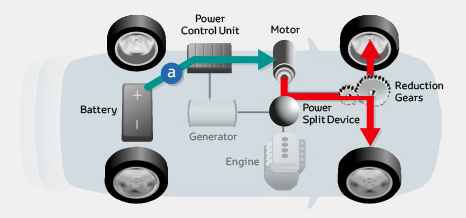Secret to Toyota's fuel efficiency: Hybrid Synergy Drive

We all know the Toyota Prius family of vehicles are fuel-efficient. Some may even know it’s because of the automaker’s Hybrid Synergy Drive (HSD) system that powers every hybrid model. But how does it work? Find out below.
At the core of HSD is a twin motor-engine setup. A gasoline engine acts as the primary means of propulsion and an electric motor provides backup power and recovers surplus energy. The computer automatically switches between the two to deliver maximum fuel efficiency and a comfortable driving feel.

Let’s dive a little deeper into the technology. When the vehicle is initially started up and all the way up to the mid-speed range, engine efficiency is at its poorest. As a result, the gasoline powerplant is shut off and the car runs solely off the high-output electric motor.

During normal cruising, the main power switches over to the warmed up engine running at high efficiency, which directly drives the wheels. A generator is also engaged — via a built-in device that splits and diverts engine output — to produce electricity for the motor.

In scenarios calling for rapid acceleration like passing on the highway, power is supplied simultaneously from both sources to boost performance.

As soon as it’s time to slow down, the process happens in reverse. While the driver lets off the accelerator and/or gets on the brakes, the wheels turn the motor, now operating as a generator, converting rotational and braking energy into additional electricity used to charge a high capacity battery. This is known as regenerative braking.

When the battery level dips down to a low level, the engine switches on the generator to begin the recharge cycle, ensuring the system maintains a healthy charge for optimum operation.

